#Python TQC考題606 二維串列行列數
#偷吃步沒用陣列做
rows=eval(input())
cols=eval(input())
for r in range(rows):
for c in range(cols):
print(“%4d” %(c-r),end=””) #不換行
print() #換行

#理解比較透徹的話,確實沒必要用陣列做:

#正統寫法
#使用陣列以及自定義函數
rows=eval(input())
cols=eval(input())
def compute(L):
for r in range(rows):
for c in range(cols):
print(“%4d” %L[r][c],end=””)
#不換行
print() #換行
L=[]
for r in range(rows):
L.append([])
#L有cols個元素,下一行for迴圈開始寫入
for c in range(cols):
L[r].append(c-r)
#L[r]不是L[c]
compute(L)
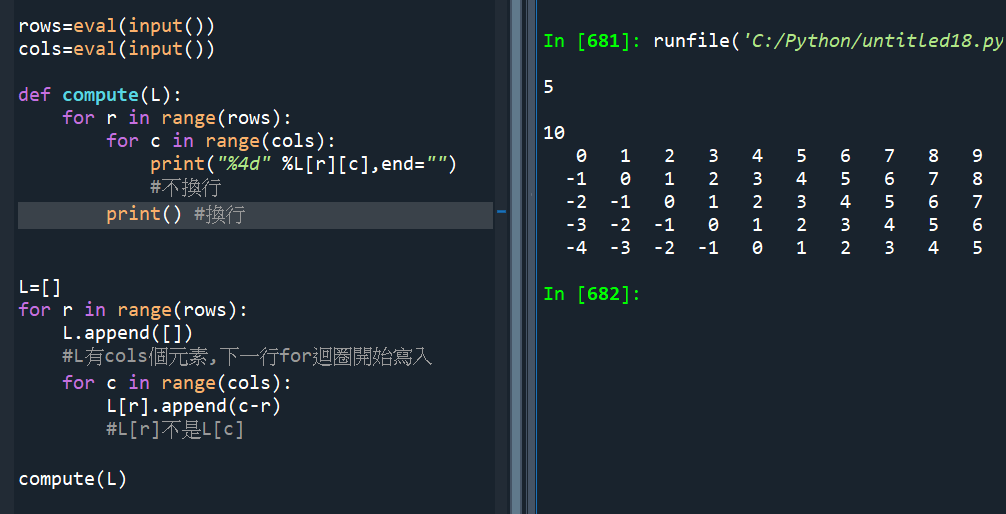
#第三次做
def compute(lt):
for r in range(rows):
for c in range(cols):
print(“%4d”%lt[r][c],end=””)
print()
#跟內層的迴圈同縮排
rows=eval(input())
cols=eval(input())
lt=[]
for r in range(rows):
lt.append([])
for c in range(cols):
lt[r].append(c-r)
compute(lt)
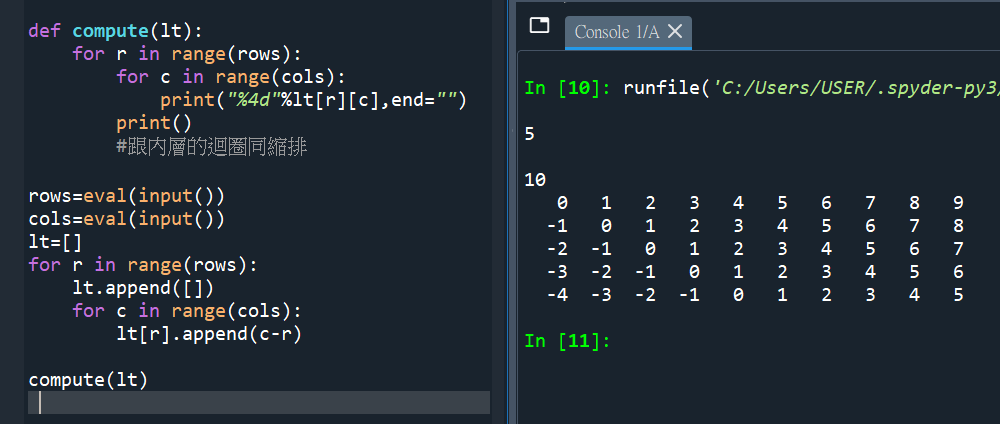
#直接印就好,跟list根本無關
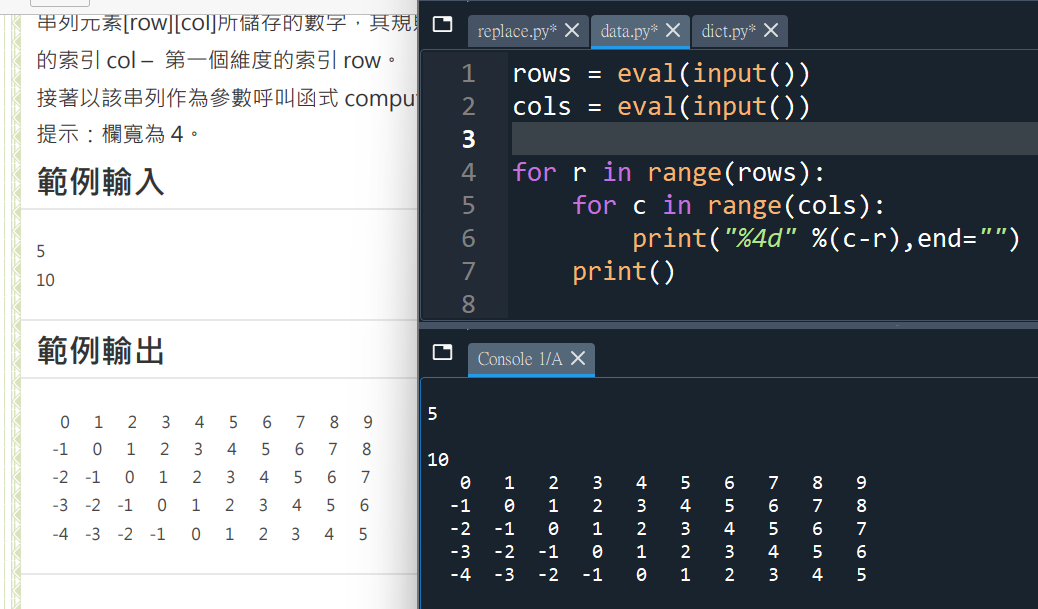
# c-r :
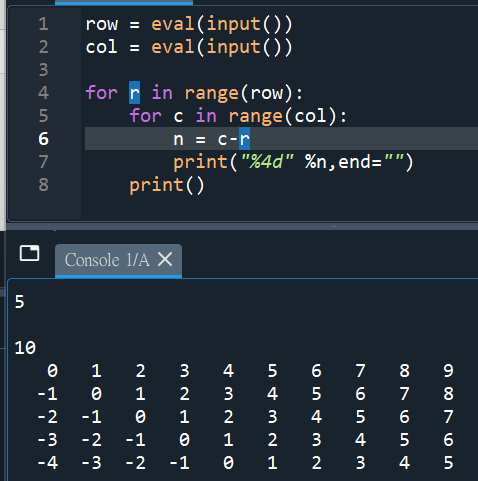









![Python socket連線出現[WinError 10049] 內容中所要求的位址不正確 cmd.exe: ipconfig/all ; TCP/IPv4 vs IPv6 - 儲蓄保險王](https://savingking.com.tw/wp-content/uploads/2022/10/20221028151556_42-520x245.png)
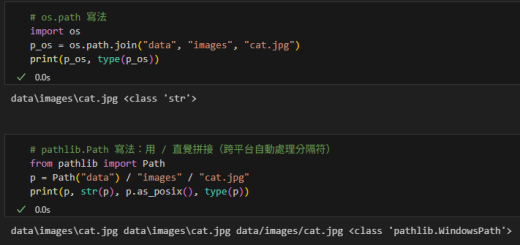

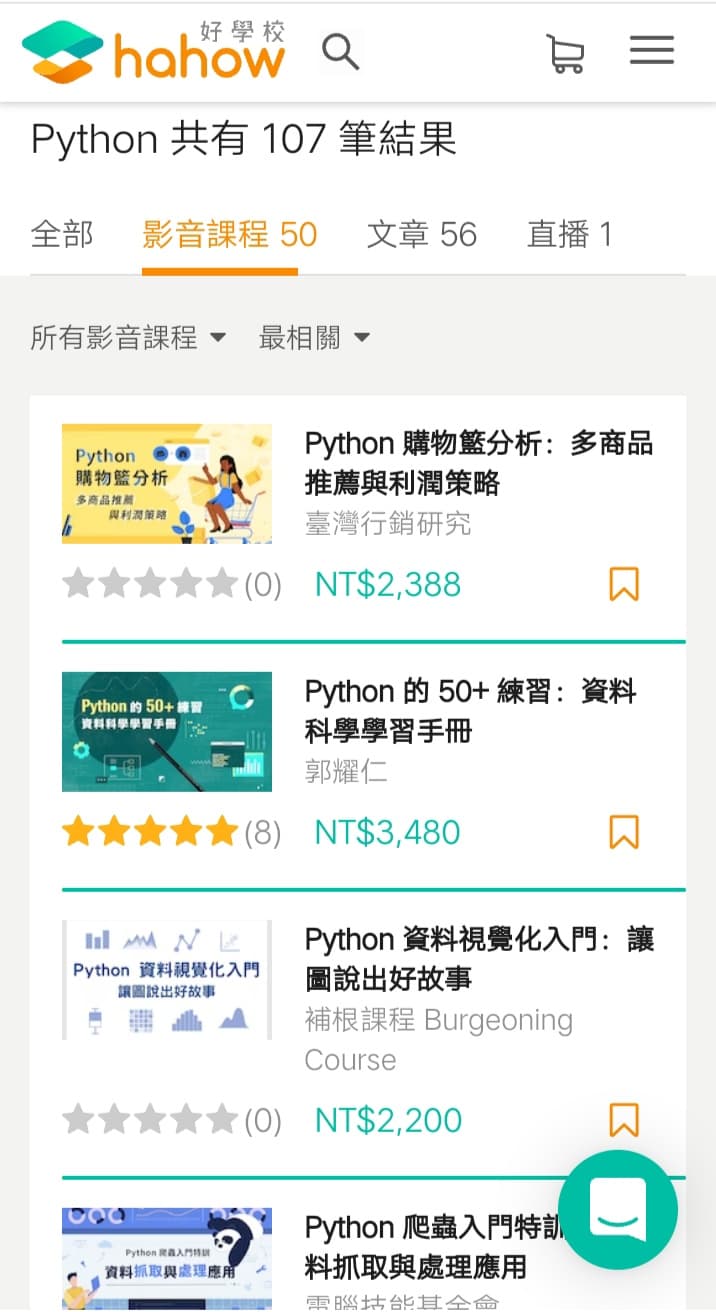
近期留言